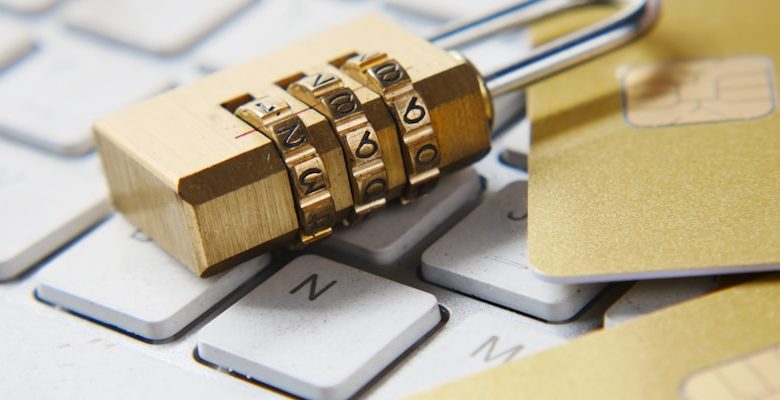How to Safeguard Your Crypto from Phishing Attacks

- Understanding the Basics of Phishing Attacks
- Identifying Common Tactics Used by Phishers
- Tips for Recognizing Phishing Emails and Websites
- Implementing Two-Factor Authentication for Added Security
- Utilizing Hardware Wallets to Protect Your Crypto Assets
- Educating Yourself on Best Practices for Crypto Security
Understanding the Basics of Phishing Attacks
Phishing attacks are a common tactic used by cybercriminals to trick individuals into revealing sensitive information such as passwords, credit card numbers, and personal data. It involves sending emails or messages that appear to be from a legitimate source, such as a bank or a trusted organization, in order to deceive recipients into clicking on malicious links or providing confidential information.
Phishing attacks can be difficult to detect because they often look like legitimate communications. However, there are some common signs to watch out for. These include spelling and grammar errors in the message, requests for personal information, urgent calls to action, and suspicious links or attachments. It is important to be cautious and verify the authenticity of any communication before taking any action.
To safeguard your crypto from phishing attacks, it is essential to educate yourself about the basics of phishing. By understanding how these attacks work and what to look out for, you can better protect yourself from falling victim to them. Remember to always be cautious when sharing personal information online and to verify the legitimacy of any communication before taking any action. By being vigilant and proactive, you can reduce the risk of falling victim to phishing attacks and keep your crypto assets safe and secure.
Identifying Common Tactics Used by Phishers
Phishing attackers often employ a variety of tactics to trick individuals into revealing sensitive information. By being aware of these common tactics, you can better safeguard your crypto assets from falling victim to such attacks.
One tactic phishers commonly use is sending deceptive emails that appear to be from legitimate sources, such as cryptocurrency exchanges or wallet providers. These emails may contain links that lead to fake websites designed to steal your login credentials or private keys. It is essential to scrutinize the sender’s email address and be wary of any email that asks for personal information or urges immediate action.
Another tactic phishers use is creating fake social media accounts or messages that impersonate trusted individuals or organizations in the crypto community. They may offer fake investment opportunities or promotions to lure you into disclosing your crypto holdings. Always verify the authenticity of any social media communication before engaging with it.
Phishers may also use deceptive tactics on legitimate websites by inserting malicious code or creating fake login pages that capture your credentials. Be cautious when entering sensitive information online and ensure that the website you are using is secure by checking for HTTPS and a valid SSL certificate.
Additionally, phishers may leverage social engineering techniques to manipulate individuals into sharing their sensitive information willingly. They may pose as customer support representatives or technical experts to gain your trust and extract information from you. Remember to always verify the identity of anyone requesting personal or financial information.
By familiarizing yourself with these common tactics used by phishers, you can better protect your crypto assets and minimize the risk of falling victim to phishing attacks. Stay vigilant and proactive in your security measures to safeguard your investments in the crypto space.
Tips for Recognizing Phishing Emails and Websites
When it comes to safeguarding your crypto from phishing attacks, it is crucial to be able to recognize phishing emails and websites. Here are some tips to help you identify and avoid falling victim to these fraudulent schemes:
- Check the sender’s email address carefully to see if it matches the official domain of the company or organization they claim to be from.
- Look for generic greetings or urgent language that pressures you to take immediate action without a second thought.
- Hover over links in emails to preview the URL and ensure it directs you to a legitimate website before clicking on it.
- Be cautious of emails requesting sensitive information like passwords, private keys, or personal details as reputable organizations would never ask for this via email.
- Verify the legitimacy of the email or website by contacting the company directly through their official channels to confirm the request.
By staying vigilant and following these tips, you can better protect your cryptocurrency assets from phishing attacks and keep your investments safe and secure.
Implementing Two-Factor Authentication for Added Security
Implementing Two-Factor Authentication (2FA) is a crucial step towards enhancing the security of your crypto assets and protecting them from phishing attacks. By adding an extra layer of verification, you can significantly reduce the risk of unauthorized access to your accounts.
Two-Factor Authentication works by requiring users to provide two different authentication factors before gaining access to their accounts. This typically involves something the user knows (such as a password) and something the user has (such as a mobile device).
When setting up 2FA for your crypto accounts, make sure to use a reliable authentication app like Google Authenticator or Authy. Avoid using SMS-based 2FA, as it can be vulnerable to SIM swapping attacks.
Once you have enabled 2FA for your accounts, you will be required to enter a one-time code from your authentication app every time you log in. This code changes periodically, adding an extra layer of security to your accounts.
Utilizing Hardware Wallets to Protect Your Crypto Assets
One effective way to protect your cryptocurrency assets from phishing attacks is by utilizing hardware wallets. Hardware wallets are physical devices that store your private keys offline, making it nearly impossible for hackers to gain access to them remotely. By keeping your private keys offline, you are adding an extra layer of security to your crypto holdings.
When you use a hardware wallet, you will need to physically confirm transactions on the device itself. This means that even if your computer or smartphone is compromised by a phishing attack, your funds will still be safe. Hardware wallets are considered one of the most secure ways to store cryptocurrency, as they are immune to malware and hacking attempts.
There are several reputable hardware wallet options available on the market, such as Ledger Nano S, Trezor, and KeepKey. These devices are designed to be user-friendly, making them accessible to both beginners and experienced cryptocurrency users. By investing in a hardware wallet, you are taking proactive steps to safeguard your crypto assets from phishing attacks and unauthorized access.
Educating Yourself on Best Practices for Crypto Security
When it comes to safeguarding your crypto from phishing attacks, educating yourself on best practices for crypto security is crucial. By staying informed and implementing security measures, you can reduce the risk of falling victim to phishing scams.
One important step in educating yourself on crypto security is to stay up to date on the latest security threats and trends. This can be done by following reputable sources such as security blogs, forums, and news outlets. By staying informed, you can better understand the potential risks and how to mitigate them.
- Another important aspect of crypto security is to use secure passwords and enable two-factor authentication whenever possible. Strong passwords are essential for protecting your crypto assets from unauthorized access. Two-factor authentication adds an extra layer of security by requiring a second form of verification, such as a code sent to your phone.
- It is also essential to be cautious of unsolicited emails, messages, or links that ask for your sensitive information. Phishing attacks often rely on tricking individuals into revealing their passwords or private keys. By being skeptical of unexpected requests for information, you can avoid falling victim to these scams.
- Furthermore, consider using a hardware wallet to store your crypto assets securely. Hardware wallets are physical devices that store your private keys offline, making it harder for hackers to access your funds. By keeping your assets offline when not in use, you can reduce the risk of them being compromised.



